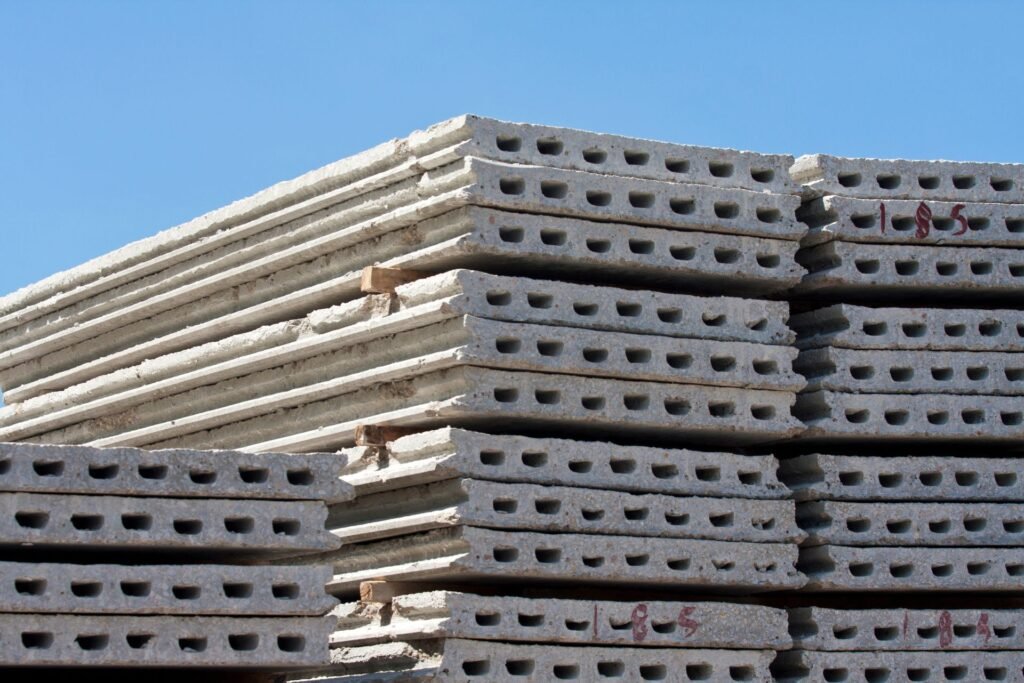Welcome to your ultimate guide on understanding concrete driveway regulations in New Zealand. Concrete driveways are a popular choice for homeowners due to their durability, low maintenance, and aesthetic appeal. However, constructing a concrete driveway involves adhering to various regulations to ensure safety, legal compliance, and environmental responsibility. In this comprehensive post, we will walk you through the essential rules and guidelines you need to know, from planning permissions and construction standards to drainage requirements and common pitfalls to avoid. Whether you are a homeowner planning a new driveway or a contractor seeking to stay updated on local regulations, this guide is designed to provide all the crucial information you need for a smooth and compliant project.
Concrete driveway regulations in New Zealand require homeowners to adhere to specific guidelines to ensure safety and compliance. Key regulations include obtaining planning permissions, adhering to zoning laws, and meeting construction standards such as proper driveway width, thickness, drainage, and slope. It’s essential to use approved materials, manage stormwater effectively, and follow reinforcement guidelines. Regular inspections ensure compliance and help avoid fines. For a successful driveway project, consult with local councils and follow the New Zealand Building Code.
Table of Contents
Why Concrete Driveways?
Concrete driveways have become a popular choice for homeowners in New Zealand, and for good reason. Let’s delve into the benefits of concrete driveways and explore why they are a preferred option.
Benefits of Concrete Driveways
Durability and Longevity
One of the most significant advantages of concrete driveways is their durability and longevity. Concrete is known for its strength and ability to withstand heavy loads, making it an ideal material for driveways. Unlike other materials that may crack or deteriorate over time, concrete driveways can last for decades with proper care. This durability means that homeowners can invest in a concrete driveway with confidence, knowing it will provide a reliable surface for years to come.
Low Maintenance
Concrete driveways require minimal maintenance compared to other driveway materials. While regular cleaning and occasional sealing can help maintain their appearance, concrete driveways do not demand frequent repairs or replacements. This low-maintenance aspect is particularly appealing to busy homeowners who want a beautiful and functional driveway without the hassle of constant upkeep. By choosing concrete, they can enjoy a pristine driveway with minimal effort.
Aesthetic Appeal
Concrete driveways offer a wide range of design options, allowing homeowners to enhance the curb appeal of their property. With various finishes, colors, and patterns available, concrete driveways can be customized to match the style of any home. From sleek, modern designs to more traditional looks, concrete provides the versatility to create a driveway that complements the overall aesthetic of the property. Additionally, stamped or stained concrete can mimic the appearance of more expensive materials like brick or stone, providing an upscale look without the high cost.
Popularity in New Zealand
Concrete driveways have gained popularity in New Zealand due to their numerous benefits and the growing trends in driveway materials.
Trends and Preferences in Driveway Materials
In recent years, there has been a noticeable shift towards durable and low-maintenance driveway options in New Zealand. Homeowners are increasingly looking for materials that can withstand the country’s varying weather conditions and provide long-term value. Concrete driveways fit this criterion perfectly, offering a robust solution that can handle everything from heavy rain to scorching sun without compromising its integrity.
Moreover, the aesthetic versatility of concrete driveways has contributed to their popularity. As more homeowners and builders recognize the potential of concrete to enhance property appeal, the demand for custom-designed concrete driveways has risen. This trend is reflected in the growing number of contractors specializing in decorative concrete finishes, catering to the diverse tastes and preferences of New Zealand homeowners.
In conclusion, concrete driveways are a smart choice for anyone looking to invest in a durable, low-maintenance, and aesthetically pleasing driveway. Their popularity in New Zealand is a testament to their many advantages and the shifting preferences towards more reliable and visually appealing materials. Whether you’re building a new home or upgrading your current driveway, concrete is a material worth considering for its long-term benefits and versatility.

The Importance Of Understanding Regulations
In any construction or renovation project, understanding and adhering to regulations is crucial. This not only ensures the safety and legal compliance of your work but also helps you avoid costly penalties and fines. Let’s delve deeper into the importance of these regulations and their impact on your project.
Safety Considerations
One of the primary reasons for strict regulations in construction is to ensure the safety of everyone involved, including workers, residents, and the general public. Adhering to safety standards helps prevent accidents and injuries. For instance, regulations often dictate the use of protective gear, proper handling of materials, and safe operation of machinery. Following these guidelines reduces the risk of on-site accidents, creating a safer work environment.
Moreover, understanding and implementing safety regulations means that the structure you build will be safe for future occupants. This includes everything from ensuring electrical systems are properly installed to making sure the building materials meet safety standards. Ignoring these regulations can lead to dangerous conditions, potentially causing harm long after the construction is complete.
Legal Compliance
Beyond safety, legal compliance is a critical aspect of understanding construction regulations. Each region has specific building codes and standards that must be met to legally undertake and complete a construction project. These codes cover a wide range of aspects, including structural integrity, electrical systems, plumbing, and fire safety.
Being well-versed in these regulations helps you avoid legal issues that can arise from non-compliance. For example, failing to meet building codes can result in your project being halted or even demolished, wasting time and resources. Additionally, legal compliance ensures that your project will pass inspections, which are often required at various stages of the construction process. Passing these inspections is necessary to obtain the necessary permits and ultimately complete your project.
Avoiding Penalties and Fines
Finally, understanding and adhering to construction regulations is essential to avoid penalties and fines. Regulatory bodies have the authority to impose significant fines for non-compliance. These fines can be hefty, depending on the severity of the violation. In some cases, continued non-compliance can lead to more severe consequences, such as lawsuits or the revocation of your building permit.
Additionally, penalties and fines can severely impact your project’s budget and timeline. Unexpected fines can deplete financial resources, causing delays and potentially compromising the quality of the work. In contrast, ensuring compliance from the outset helps keep your project on track and within budget.
In conclusion, understanding regulations in the construction industry is not just a bureaucratic necessity but a critical component of any successful project. Prioritizing safety considerations, legal compliance, and avoiding penalties and fines ensures a smoother, more efficient construction process and a safer, legally sound finished product. By taking the time to thoroughly understand and implement these regulations, you protect both your project and everyone involved in its execution.

General Overview Of NZ Building Codes
Introduction to Building Codes in NZ
Building codes in New Zealand serve as essential guidelines ensuring that all construction and renovation projects meet specific safety, durability, and performance standards. These codes are designed to protect both the occupants of buildings and the wider community, ensuring that structures are safe, healthy, and energy-efficient.
Purpose of Building Codes
The primary purpose of building codes is to establish minimum standards for construction quality, structural integrity, fire safety, energy efficiency, and accessibility. These regulations are crucial for preventing potential hazards and ensuring that buildings can withstand natural disasters, such as earthquakes, which are common in New Zealand. Compliance with building codes also helps in maintaining property values and reducing maintenance costs over time.
How They Apply to Driveways
While building codes primarily focus on structures, they also encompass regulations for driveways, ensuring they are safe and functional. Driveways must be constructed to support the weight of vehicles, provide proper drainage to prevent flooding or water damage, and include appropriate surfacing to avoid slips and falls. Compliance with these regulations ensures that driveways are durable and safe for use.
Key Regulatory Bodies
In New Zealand, the enforcement and development of building codes are managed by several key regulatory bodies. Understanding their roles and responsibilities is crucial for anyone involved in construction or renovation projects.
Local Councils
Local councils play a significant role in the implementation and enforcement of building codes. They are responsible for issuing building consents, inspecting construction sites, and ensuring compliance with local bylaws and regulations. Each council may have specific requirements and guidelines tailored to the unique needs of their community. Engaging with local councils early in the planning process can help streamline the approval process and avoid potential delays.
New Zealand Building Code (NZBC)
The New Zealand Building Code (NZBC) is the overarching framework that sets the standards for all building work in the country. The NZBC outlines the performance criteria that buildings must meet, including structural stability, fire safety, moisture control, energy efficiency, and accessibility. It provides a flexible approach, allowing for innovation and the use of new materials and methods, as long as the performance criteria are met. The NZBC is continuously updated to reflect advances in building technology and changes in societal needs.
Understanding and adhering to the New Zealand Building Code is essential for ensuring that construction projects are safe, sustainable, and compliant with national standards. By working closely with local councils and staying informed about the NZBC, builders and property owners can ensure that their projects meet all necessary requirements and contribute to the overall safety and well-being of their communities.

Specific Regulations For Concrete Driveways
When planning to install or renovate a concrete driveway, it’s crucial to understand the specific regulations that govern this process. These regulations ensure that your driveway meets local standards and complies with safety and environmental guidelines. Here’s a detailed breakdown of the key areas you need to consider:
Planning Permissions
When Do You Need a Consent?
In many regions, obtaining planning permission is a mandatory step before starting construction on your concrete driveway. Generally, you will need consent if:
- Your property is located in a designated area, such as a conservation area or a historic district.
- The driveway will have a significant impact on the street scene or neighboring properties.
- The new driveway involves extensive changes to the landscape, such as adding retaining walls or altering natural drainage patterns.
- Your project includes modifying an existing driveway in a way that increases its size or changes its access points.
How to Apply for Planning Permission
Applying for planning permission involves several steps
1. Research and Preparation: Begin by researching your local planning authority’s requirements. This includes understanding the documents needed and any specific criteria that must be met.
2. Submitting an Application: Complete the planning application form, which can often be found on your local council’s website. This form will require details about your property, the proposed changes, and plans or drawings of the project.
3. Consulting with Neighbors: While not always mandatory, consulting with your neighbors can prevent potential objections and ensure a smoother approval process.
4. Awaiting Approval: Once submitted, the planning authority will review your application. This can take several weeks to months, depending on the complexity of your project and the local guidelines.
Zoning and Property Boundaries
Understanding Zoning Laws
Zoning laws dictate how land in specific areas can be used. These laws can affect:
- The placement of your driveway.
- The types of materials you can use.
- Whether your driveway can include certain features, like lighting or decorative elements.
To ensure compliance, check with your local zoning office. They can provide a zoning map and explain any restrictions that apply to your property.
Rules Regarding Property Boundaries and Easements
It’s important to know the exact boundaries of your property and any easements that might affect your driveway installation. Easements are portions of your property that other entities, such as utility companies, have the right to use. To avoid legal issues:
- Obtain a property survey if you’re unsure about your boundaries.
- Respect the setback requirements, which dictate how far your driveway must be from the property lines.
- Ensure that your driveway does not encroach on any easements.
Driveway Width and Thickness Requirements
Minimum and Maximum Width
The width of your driveway should accommodate your vehicles comfortably while adhering to local regulations. Typical guidelines include:
- Minimum Width: Generally, a single-car driveway should be at least 10 feet wide, while a two-car driveway should be around 20 feet wide.
- Maximum Width: Some municipalities have restrictions on the maximum width to preserve the aesthetic and functionality of the neighborhood streets.
Recommended Thickness for Durability and Compliance
The thickness of your concrete driveway is crucial for its durability and longevity. Recommendations typically include:
- Residential Driveways: A minimum thickness of 4 inches is recommended for light vehicles. For heavier vehicles or more frequent use, a thickness of 6 inches is advisable.
- Reinforcement: Adding steel reinforcement or a mesh can enhance the driveway’s strength, especially in areas with heavy traffic or harsh weather conditions.
By understanding and adhering to these specific regulations, you can ensure that your concrete driveway project is successful, compliant, and long-lasting. Always consult with local authorities and professionals to navigate the regulatory landscape effectively.

Construction Standards
When it comes to constructing retaining walls in New Zealand, adhering to construction standards is crucial. These standards ensure the stability, durability, and safety of the structures. Let’s delve into the specifics of the construction standards you need to follow:
Materials and Quality Standards
Approved Types of Concrete
The type of concrete used in retaining walls plays a significant role in the wall’s longevity and strength. In New Zealand, only approved types of concrete are used, which conform to NZS 3101 standards. This ensures that the concrete can withstand local environmental conditions, including varying temperatures and moisture levels.
Standards for Aggregates and Other Materials
Aggregates form the backbone of concrete, and their quality directly impacts the strength and durability of the retaining wall. According to NZS 3121, aggregates must be clean, durable, and appropriately sized. Other materials like reinforcing steel must comply with NZS 4671 standards, ensuring they have the required tensile strength and corrosion resistance.
Drainage and Water Management
Regulations for Proper Drainage
Proper drainage is essential to prevent water accumulation behind the retaining wall, which can lead to hydrostatic pressure and potential failure. New Zealand regulations, such as NZBC E1, mandate the incorporation of drainage solutions like weep holes and drain pipes. These elements ensure that water is effectively channeled away from the wall.
Preventing Water Runoff Issues
Water runoff can erode the soil around the retaining wall, undermining its stability. To mitigate this, NZS 4404 provides guidelines on designing systems that manage runoff, including the use of swales, catch basins, and permeable materials. These measures help maintain the integrity of the retaining wall by preventing erosion and soil displacement.
Slope and Gradient Regulations
Acceptable Slopes for Safety and Functionality
The slope or gradient of the retaining wall must be carefully designed to ensure both safety and functionality. According to NZS 4431, the acceptable slope depends on the soil type, wall height, and load conditions. Typically, slopes between 1:6 and 1:10 are recommended for stability, but each project may require specific analysis and adjustment.
Reinforcement and Foundations
Guidelines for Reinforcement Materials
Reinforcement is critical to enhancing the tensile strength of retaining walls. New Zealand standards, such as NZS 3109, specify the types of reinforcement materials to be used, including steel rebar and geotextiles. These materials must be placed according to design specifications to ensure they provide the necessary structural support.
Proper Foundation Construction Techniques
The foundation of a retaining wall must be constructed correctly to support the weight of the wall and the retained soil. This involves excavating to the proper depth, compacting the soil, and using a base layer of crushed stone or gravel. The foundation must be level and strong enough to prevent settling and shifting, in accordance with NZS 3604 standards.
By adhering to these construction standards, you ensure that your retaining wall is not only compliant with New Zealand regulations but also robust and long-lasting. Proper material selection, effective drainage, careful slope management, and reinforced foundations all contribute to the overall stability and functionality of the structure.

Environmental Considerations
When planning and constructing a concrete driveway, it’s crucial to consider the environmental impact and adhere to regulations designed to protect the local ecosystem. This section will delve into the key environmental considerations, including the impact on the local ecosystem, stormwater management, and the benefits of using permeable surfaces.
Impact on Local Ecosystem
The construction of a concrete driveway can significantly impact the local ecosystem if not managed properly. It’s essential to adopt practices that minimize this impact, ensuring the preservation of local flora and fauna. During construction, careful planning can help mitigate the disruption to natural habitats. For instance, limiting the use of heavy machinery to specific areas, avoiding the removal of mature trees, and preserving natural water courses can help protect the local environment.
Moreover, using eco-friendly materials and techniques can further reduce the ecological footprint of your project. Opting for recycled concrete or other sustainable materials can minimize the demand for new resources and reduce waste. By taking these steps, you contribute to a healthier environment and promote biodiversity in your area.
Stormwater Management
Effective stormwater management is a critical aspect of environmental considerations in driveway construction. Regulations often mandate specific measures to control and manage stormwater runoff to prevent flooding and water pollution. Proper stormwater management involves designing a driveway that allows water to drain effectively, reducing the risk of erosion and contamination of local water bodies.
One way to achieve this is by incorporating features such as swales, rain gardens, or retention basins around your driveway. These features can help capture and filter stormwater, allowing it to infiltrate the ground slowly. Additionally, maintaining proper gradients and installing drainage systems ensures that water flows away from your driveway and into designated drainage areas, complying with local regulations.
Permeable vs. Non-permeable Surfaces
When it comes to driveway surfaces, the choice between permeable and non-permeable options can have significant environmental implications. Permeable concrete options offer several advantages over traditional non-permeable surfaces.
Advantages of Permeable Concrete Options
Permeable concrete, also known as pervious or porous concrete, allows water to pass through its surface, reducing runoff and promoting groundwater recharge. This characteristic makes it an environmentally friendly choice for driveways. Permeable concrete helps manage stormwater naturally, reducing the burden on municipal drainage systems and decreasing the risk of flooding.
Furthermore, permeable surfaces can filter pollutants from stormwater as they percolate through the material, improving water quality. This filtration process can remove contaminants such as oils, heavy metals, and debris, preventing them from reaching local waterways. By choosing permeable concrete, you not only contribute to better stormwater management but also enhance the overall health of the local ecosystem.
Regulatory Stance on Permeable Driveways
Many local governments and regulatory bodies encourage the use of permeable driveways due to their environmental benefits. In some areas, there are even incentives or requirements for using permeable materials in new construction projects. These regulations aim to promote sustainable development practices and protect natural resources.
Before starting your driveway project, it’s essential to check with local authorities to understand the specific regulations and incentives related to permeable surfaces. By complying with these guidelines, you can ensure that your driveway project aligns with environmental standards and contributes to the sustainability of your community.
In conclusion, considering the environmental impact of your driveway project is not only a regulatory requirement but also a responsible approach to construction. By minimizing the impact on the local ecosystem, managing stormwater effectively, and opting for permeable surfaces, you can create a driveway that is both functional and environmentally friendly.

Compliance And Inspections
Steps to Ensure Compliance
Ensuring compliance in construction is a crucial step that helps prevent legal issues and ensures the safety and reliability of the structure. Here are key steps to follow for regulatory compliance before construction:
1. Understand Local Regulations: Start by familiarizing yourself with the local building codes and regulations. Each region may have specific requirements that need to be met.
2. Obtain Necessary Permits: Before breaking ground, ensure all required permits are secured. This may include zoning permits, building permits, and environmental clearances.
3. Hire Qualified Professionals: Engage professionals who are well-versed in local regulations. This includes architects, engineers, and contractors who can guide the project in adherence to the codes.
4. Create a Compliance Checklist: Develop a comprehensive checklist that covers all regulatory requirements. This checklist should be used throughout the project to ensure all aspects of compliance are being addressed.
5. Plan for Inspections: Schedule inspections at various stages of the construction process. These inspections are vital for identifying potential issues early and ensuring that the project remains compliant.
6. Document Everything: Keep thorough records of all compliance-related documents. This includes permits, inspection reports, and any correspondence with regulatory bodies.
By following these steps, you can minimize the risk of compliance issues and ensure that your construction project is built to standard.
Role of Inspections
Inspections play a pivotal role in the construction process. They are designed to verify that all aspects of the project meet the necessary safety and quality standards. Here’s a closer look at when and how inspections are conducted, and what inspectors typically look for during their assessments:
1. When Inspections Are Conducted: Inspections are scheduled at various critical points during the construction process. These include:
- Pre-Construction: Before any physical work begins, inspectors may review plans and permits to ensure everything is in order.
- Foundation Stage: Once the foundation is laid, an inspection ensures it meets structural and safety requirements.
- Framing and Structural Work: Inspections at this stage verify that the framework of the building adheres to the code.
- Systems Installation: This includes inspections of electrical, plumbing, and HVAC systems to ensure they are installed correctly and safely.
- Final Inspection: A comprehensive review of the completed project to ensure it meets all regulatory requirements before occupancy.
2. How Inspections Are Conducted: Inspectors follow a systematic approach during their assessments:
- Review Documentation: Inspectors start by reviewing all relevant documents, including plans, permits, and previous inspection reports.
- On-Site Evaluation: They conduct a thorough on-site evaluation, checking various aspects of the construction against the regulatory standards.
- Reporting: Inspectors provide detailed reports highlighting any issues found and suggesting necessary corrections. These reports are critical for ensuring ongoing compliance.
3. What Inspectors Look For: During their assessments, inspectors focus on several key areas:
- Structural Integrity: Ensuring that the building’s structural elements are sound and built according to code.
- Safety Systems: Verifying that all safety systems, such as fire alarms and sprinklers, are properly installed and functional.
- Code Compliance: Checking that all construction practices meet the local building codes and standards.
- Quality of Workmanship: Assessing the quality of workmanship to ensure it meets industry standards.
By understanding the steps to ensure compliance and the role of inspections, you can better navigate the regulatory landscape of construction projects, leading to successful and legally compliant outcomes.

Common Pitfalls And How To Avoid Them
Constructing a driveway might seem straightforward, but there are several pitfalls that can lead to costly mistakes, regulatory breaches, and the need for rework. Understanding these common mistakes and knowing how to avoid them can save you time, money, and a lot of headaches.
Common Mistakes in Driveway Construction
Driveway construction, while appearing simple, often encounters several issues that can derail the project. One of the most common mistakes is not adhering to local regulations. Each region has specific building codes and regulations that must be followed, and failure to comply can result in fines, delays, and the need to redo work.
For example, one common regulatory breach is improper drainage. Many areas require driveways to be constructed in a way that directs water runoff away from the property and into designated drainage systems. Failure to do so can lead to water pooling, erosion, and even damage to the property and surrounding areas.
Another frequent mistake is the use of substandard materials. Opting for cheaper, lower-quality materials might save money initially, but it often results in a driveway that deteriorates quickly. Cracking, sinking, and surface wear are common issues that arise from using poor materials, leading to expensive repairs and replacements sooner than expected.
Improper site preparation is another significant pitfall. Without adequately clearing and leveling the site, the driveway foundation may be unstable, causing long-term structural issues. Neglecting to address soil conditions, such as expansive soils or poor compaction, can also lead to uneven settling and cracking.
Tips for Ensuring Compliance
To avoid these common pitfalls and ensure your driveway construction complies with all regulations, follow these best practices:
1. Research Local Regulations: Before starting your project, thoroughly research the local building codes and regulations. This includes understanding requirements for drainage, material specifications, and any permits needed. Contact your local building authority if you have any questions or need clarification on specific regulations.
2. Use High-Quality Materials: Invest in high-quality materials that are suitable for your region’s climate and soil conditions. While it may be tempting to cut costs with cheaper options, using premium materials will ensure your driveway lasts longer and requires less maintenance.
3. Hire Experienced Contractors: If you’re not experienced in driveway construction, consider hiring a professional contractor. Experienced contractors are familiar with local regulations, proper site preparation techniques, and the best materials to use. They can also help you avoid common mistakes and ensure the project is completed correctly the first time.
4. Proper Site Preparation: Ensure the site is adequately prepared before construction begins. This includes clearing vegetation, leveling the ground, and addressing any soil issues. Proper site preparation will create a stable foundation for your driveway and prevent future problems.
5. Install Adequate Drainage: Make sure your driveway is designed with proper drainage in mind. This might involve grading the driveway to direct water away from your home and installing drainage systems, such as French drains or permeable pavers, to manage runoff.
6. Regular Maintenance: Once your driveway is constructed, regular maintenance is crucial to keep it in good condition. Seal cracks promptly, remove debris, and reseal the surface as needed to protect it from weathering and wear.
By understanding common pitfalls in driveway construction and implementing these best practices, you can ensure a successful project that complies with regulations and stands the test of time. This proactive approach will help you avoid fines, reduce the need for rework, and ultimately save you money and stress in the long run.

Case Studies And Real-Life Examples
Successful Driveway Projects
When it comes to constructing a driveway, real-life examples provide invaluable insights into what works best. One standout example is the recent project completed by XYZ Driveways in Auckland. This project showcases a well-constructed driveway that adhered to all compliance standards and exceeded client expectations. The driveway, made from high-quality concrete, demonstrated exceptional durability and aesthetic appeal. The project was completed within the scheduled timeframe and budget, highlighting the importance of meticulous planning and execution.
The team at XYZ Driveways started by conducting a thorough site assessment, ensuring the foundation was solid and the drainage system was adequately planned. They used reinforced concrete to enhance the driveway’s strength, ensuring it could withstand heavy traffic and adverse weather conditions. The finished product not only looked impressive but also promised longevity, with minimal maintenance required. This project serves as a prime example of how adherence to standards and the use of quality materials can result in a driveway that is both functional and visually appealing.
Lessons Learned from Non-compliant Projects
Not all driveway projects go as smoothly as the one completed by XYZ Driveways. In fact, some projects face significant challenges due to non-compliance with construction standards. One notable example involved a driveway in Wellington that encountered numerous issues soon after completion. The problems arose primarily because the contractors cut corners during the preparation phase, failing to adequately compact the base material and neglecting proper drainage solutions.
As a result, the driveway began to show signs of cracking and sinking within months of its installation. This led to water pooling in various areas, exacerbating the deterioration. The homeowner had to undertake costly repairs to address these issues, which included removing the compromised sections and reinforcing the base with the correct materials. Proper drainage systems were also installed to prevent future water damage.
This case highlights the critical importance of adhering to construction standards and best practices. By learning from such non-compliant projects, contractors and homeowners can avoid similar pitfalls. It underscores the necessity of thorough site preparation, the use of high-quality materials, and the implementation of effective drainage solutions. These measures are essential to ensure the longevity and durability of any driveway project.
In conclusion, examining both successful and problematic driveway projects offers valuable lessons for anyone involved in such construction. By understanding what contributes to a successful project and what pitfalls to avoid, contractors and homeowners alike can ensure their driveways are built to last, offering both functionality and aesthetic value.

FAQs: About Concrete Driveway Regulations In NZ
Do I need planning permission for a concrete driveway in New Zealand?
Yes, you often need planning permission to construct a concrete driveway. It’s essential to check with your local council for specific requirements and to ensure compliance with zoning laws.
What are the minimum width and thickness requirements for a concrete driveway?
The minimum width for a residential driveway is typically around 2.5 meters, but it can vary based on local regulations. The recommended thickness for durability and compliance is usually between 100-150mm, depending on the expected load.
Are there specific materials that must be used for constructing a concrete driveway?
Yes, regulations specify the use of approved types of concrete and aggregates. It’s crucial to use high-quality materials to meet the New Zealand Building Code standards.
How important is drainage in driveway construction?
Proper drainage is critical to prevent water runoff issues and damage to your property and surrounding areas. Regulations require effective stormwater management solutions to be in place.
What slope or gradient is acceptable for a concrete driveway?
The acceptable slope for a driveway ensures safety and functionality, usually around 1:10 to 1:20 (5% to 10%). However, this can vary, so it’s important to consult local guidelines.
What are the environmental considerations for constructing a driveway?
Environmental regulations focus on minimizing impact during construction, effective stormwater management, and the use of permeable surfaces where possible to allow water to filter through the driveway.
What steps should I take to ensure compliance with driveway regulations?
Ensure compliance by consulting local councils, obtaining necessary permits, using approved materials, following construction standards, and scheduling inspections as required.
What are the common mistakes to avoid when constructing a concrete driveway?
Common mistakes include failing to obtain necessary permits, improper drainage solutions, not adhering to width and thickness requirements, and using substandard materials.
How often are inspections required during the construction of a driveway?
Inspections may be required at various stages of construction, such as after laying the foundation, during concrete pouring, and upon project completion, to ensure all regulations are met.
What should I do if my driveway doesn’t comply with regulations?
If your driveway is found to be non-compliant, you will need to address the specific issues identified by the inspector. This may involve making adjustments or modifications to meet the required standards. Always consult with local authorities for guidance on rectifying any non-compliance issues.
Conclusion
In conclusion, we’ve covered the critical regulatory aspects that must be considered when dealing with your project. It’s essential to stay informed about local regulations, permits, and codes to ensure compliance and avoid potential issues. We strongly encourage you to consult with local councils and professionals to navigate these regulations effectively. For more detailed guidance, contacting local authorities is highly recommended. We invite you to share your questions or experiences in the comments section, fostering a community of shared knowledge and support.
About the Author:
Mike Veail is a recognized digital marketing expert with over 6 years of experience in helping tradespeople and small businesses thrive online. A former quantity surveyor, Mike combines deep industry knowledge with hands-on expertise in SEO and Google Ads. His marketing strategies are tailored to the specific needs of the trades sector, helping businesses increase visibility and generate more leads through proven, ethical methods.
Mike has successfully partnered with numerous companies, establishing a track record of delivering measurable results. His work has been featured across various platforms that showcase his expertise in lead generation and online marketing for the trades sector.
Learn more about Mike's experience and services at https://theleadguy.online or follow him on social media:










